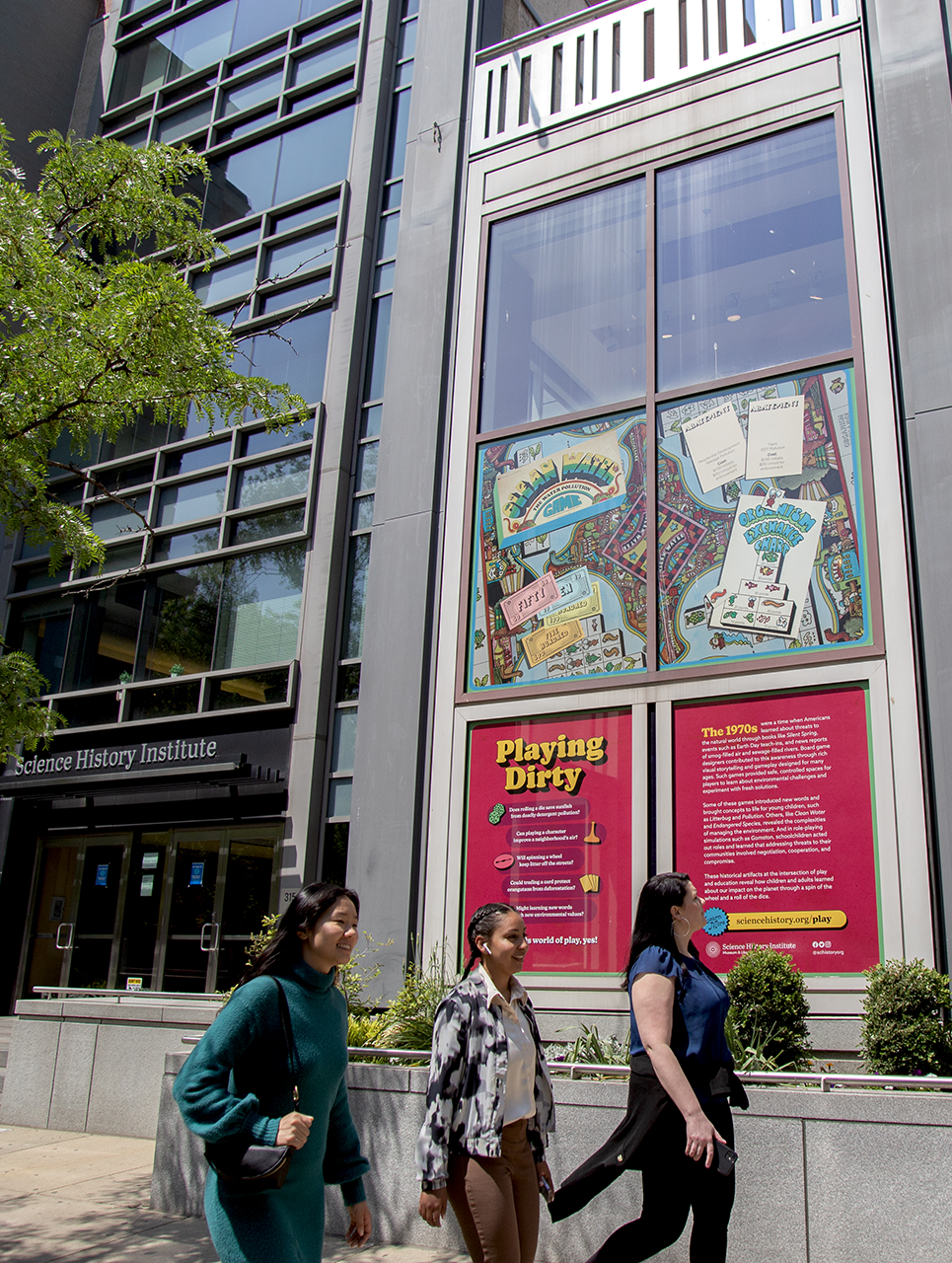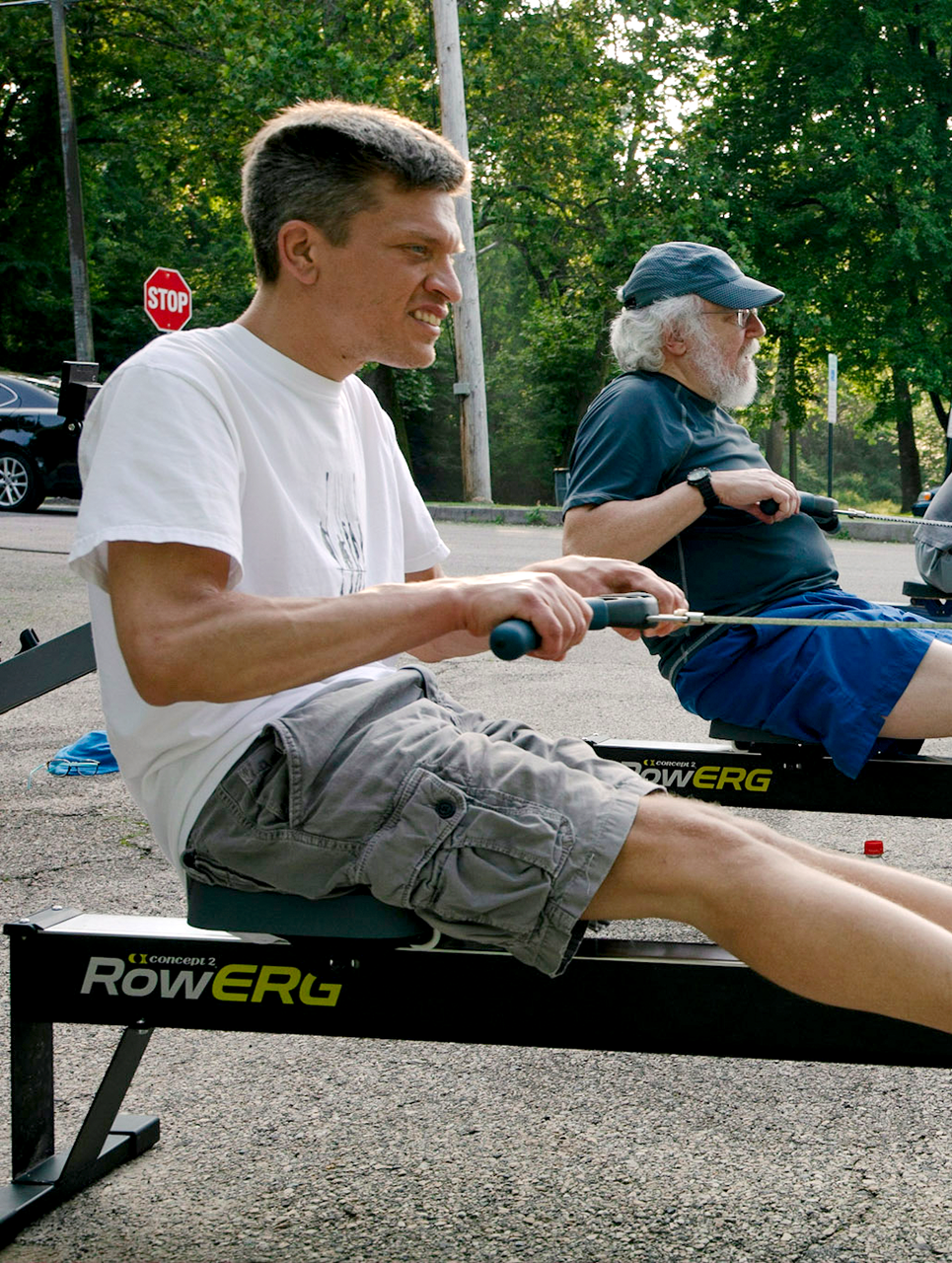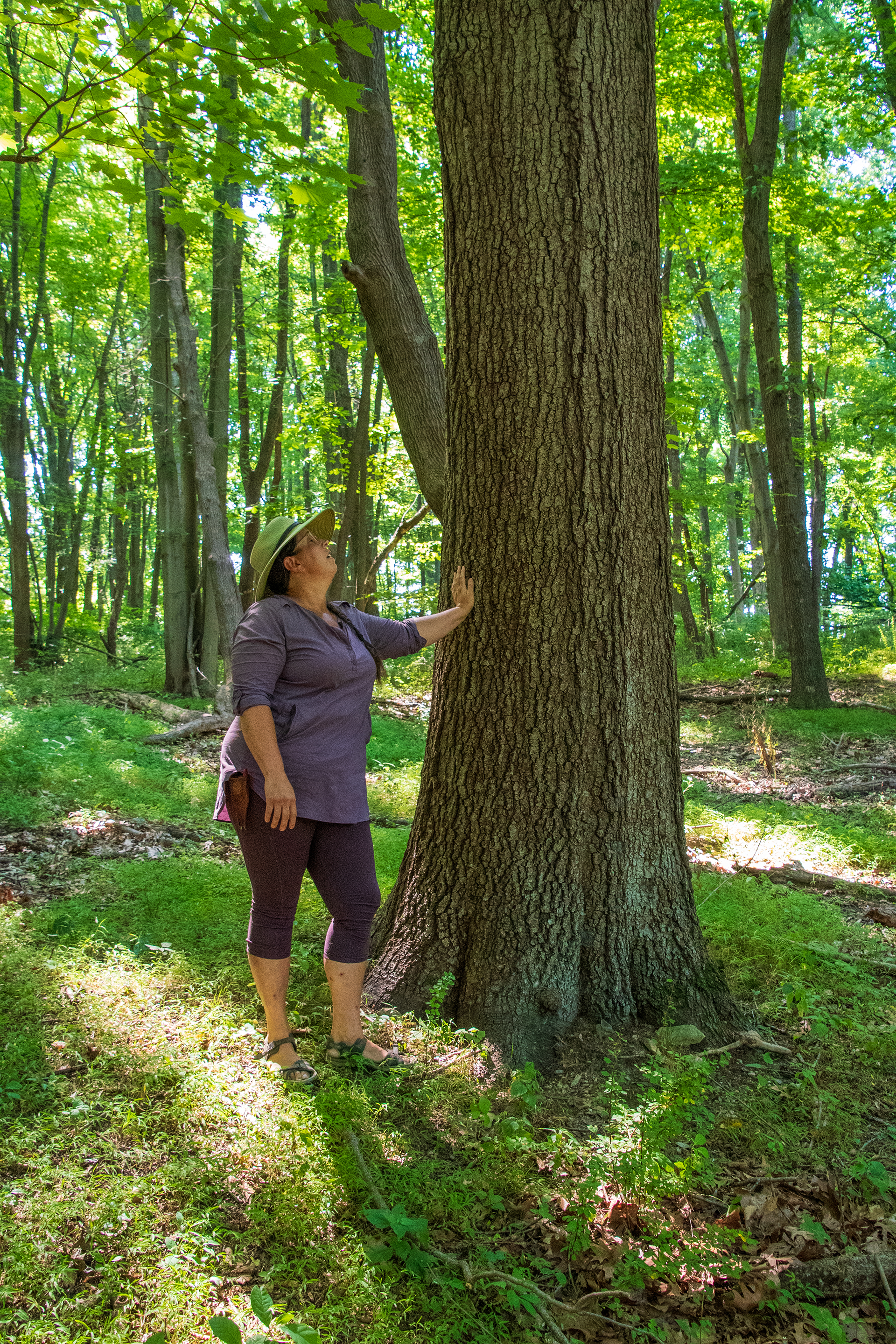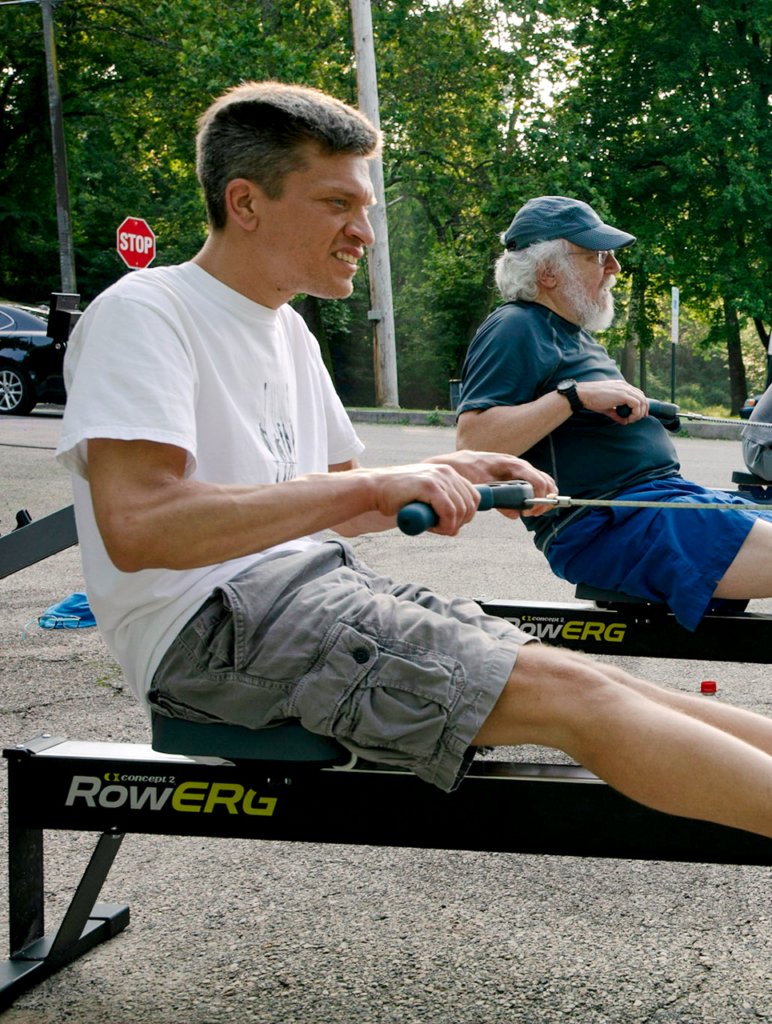A dancing penguin. A googly-eyed amoeba. Psychedelic fonts amidst splashes of avocado, harvest gold, mod magenta.
“Playing Dirty,” the Science History Institute’s latest outdoor exhibition, features the “bright colors and groovy graphics” — to borrow senior manager of exhibition projects and programming Christy Schneider’s words — you’d expect from the era of lava lamps and flower power. The imagery gracing the institute’s Chestnut Street façade through October also reflects the increasing awareness of environmental issues in a decade — the 1970s — that saw the first Earth Day and the passage of such legislation as the Clean Water and Endangered Species Acts.
With that increasing awareness, says curatorial fellow and “Playing Dirty” curator Sherri Sheu, came questions, a few of which she rattled off at the institute’s First Friday event in May. “How are we going to be able to harness this momentum of everybody caring about the environment and put it into actionable change? What exactly do people need to learn about the environment anyway? How are different age groups going to learn about the environment?” One — perhaps unexpected — answer devised by disco-decade creatives? Board games.
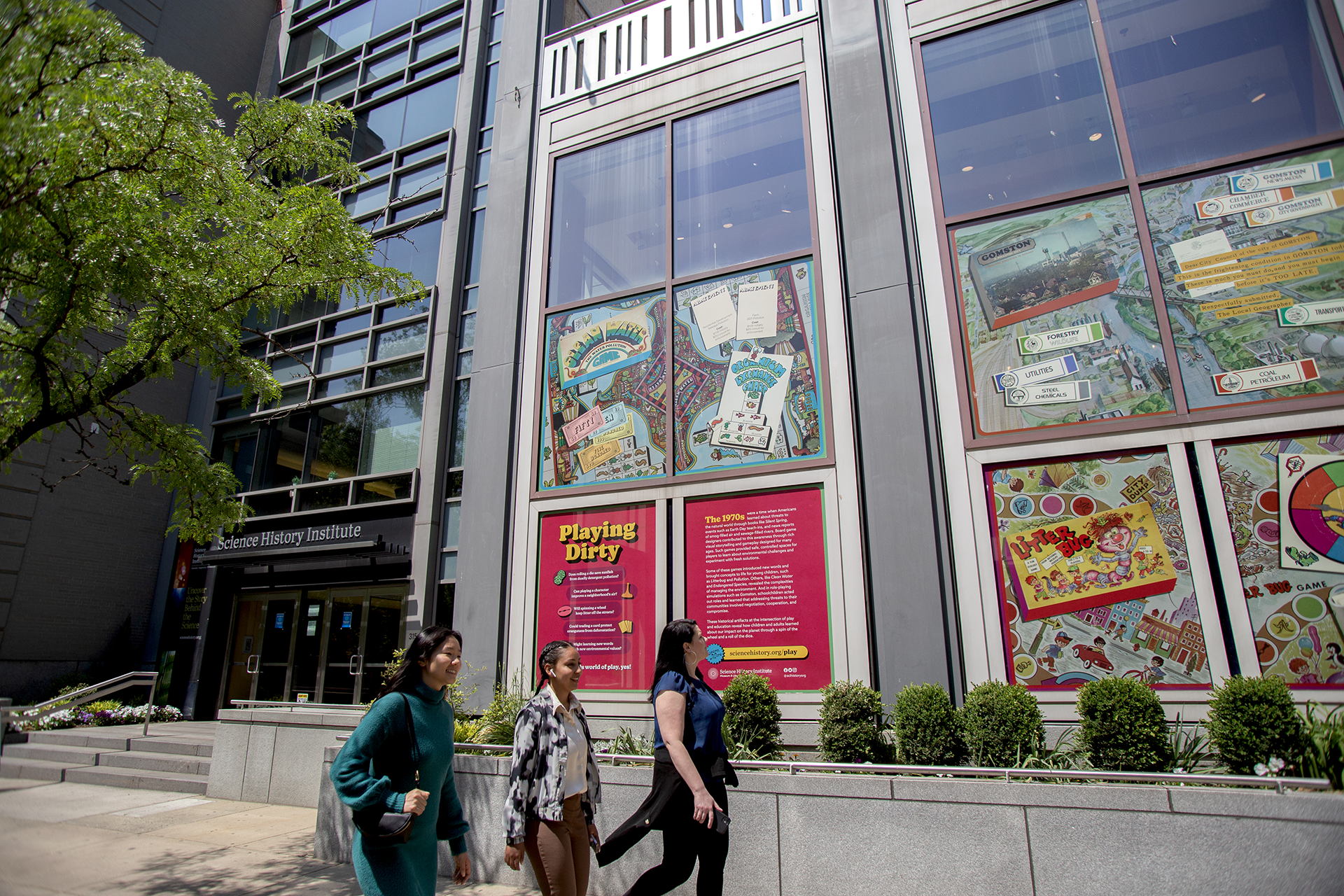
“You can do things in board games that you can’t do in books, that you can’t do through videos,” Sheu explained, “because they allow you to play, they allow you to experiment, … to see what really happens if you decide that, hey, I don’t care what happens to anybody else, I just want to win for myself.”
For “Playing Dirty,” Sheu selected from the institute’s collection of environmentally themed board games — the largest in the country — artifacts that, besides being “fabulous material objects,” demonstrate the broad reach of boxed, board-based edutainment in the 1970s.
Take Litter Bug. Released in 1970, Litter Bug tasks players in the pre- and elementary school demographic with keeping the community — its quaint zoo, beach, campsite and main street haunted by a crazy-eyed, sharp-toothed litter bug lurking in the city dump — clean by collecting trash and depositing it in the trash cans that serve as game pieces. The player who picks up the most litter — broken bottles, old shoes, apple cores — wins.
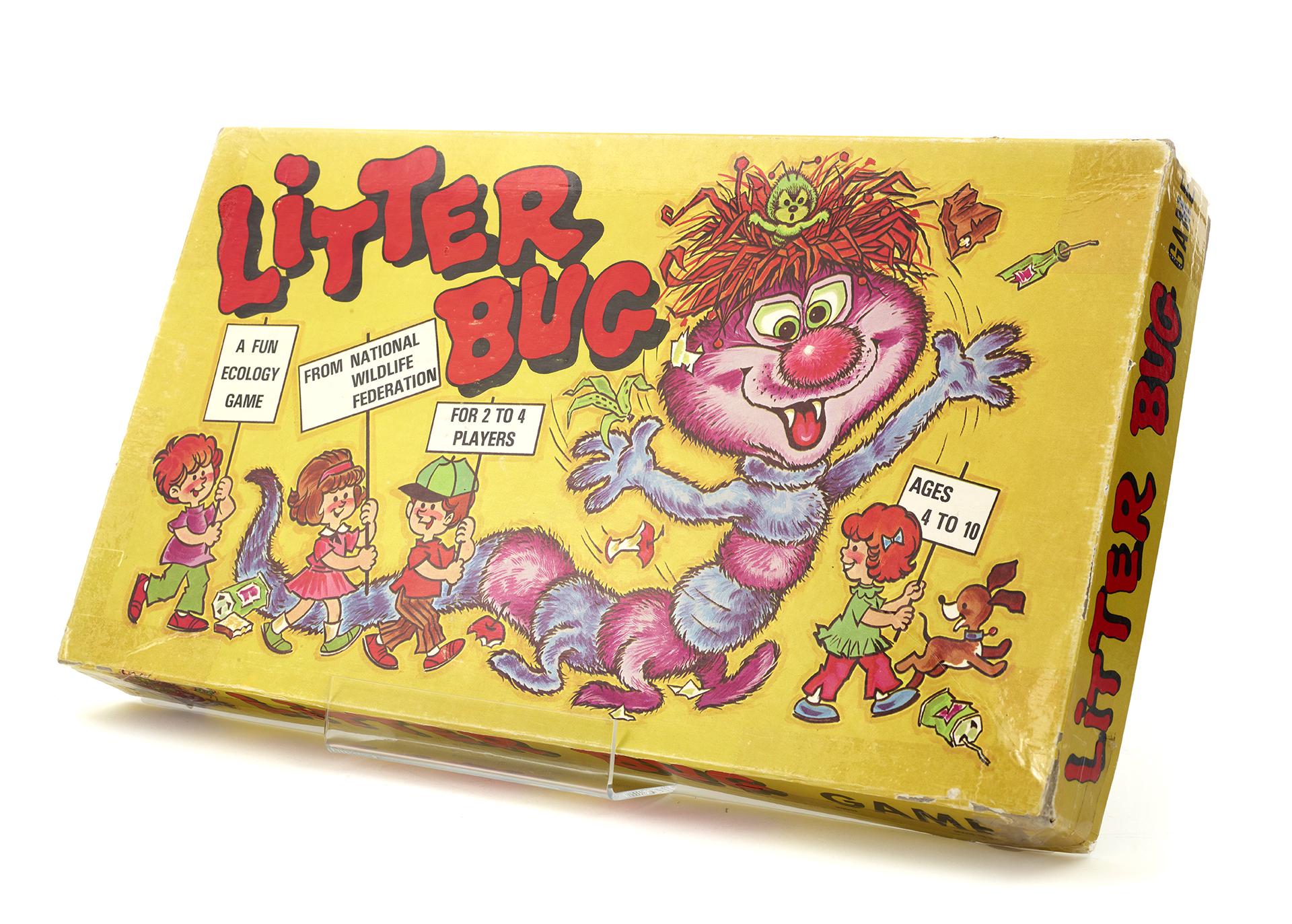
“So it’s teaching kids littering is bad,” Sheu said at her May curator talk, and that “trash goes into a trash can.” Litter Bug can also be viewed, Sheu noted, as an initiation into the personal responsibility approach to environmentalism — which, of course, lets industry actors off the hook. Put the onus of recycling on individuals, and the accountability of bottle manufacturers stops short at the factory door.
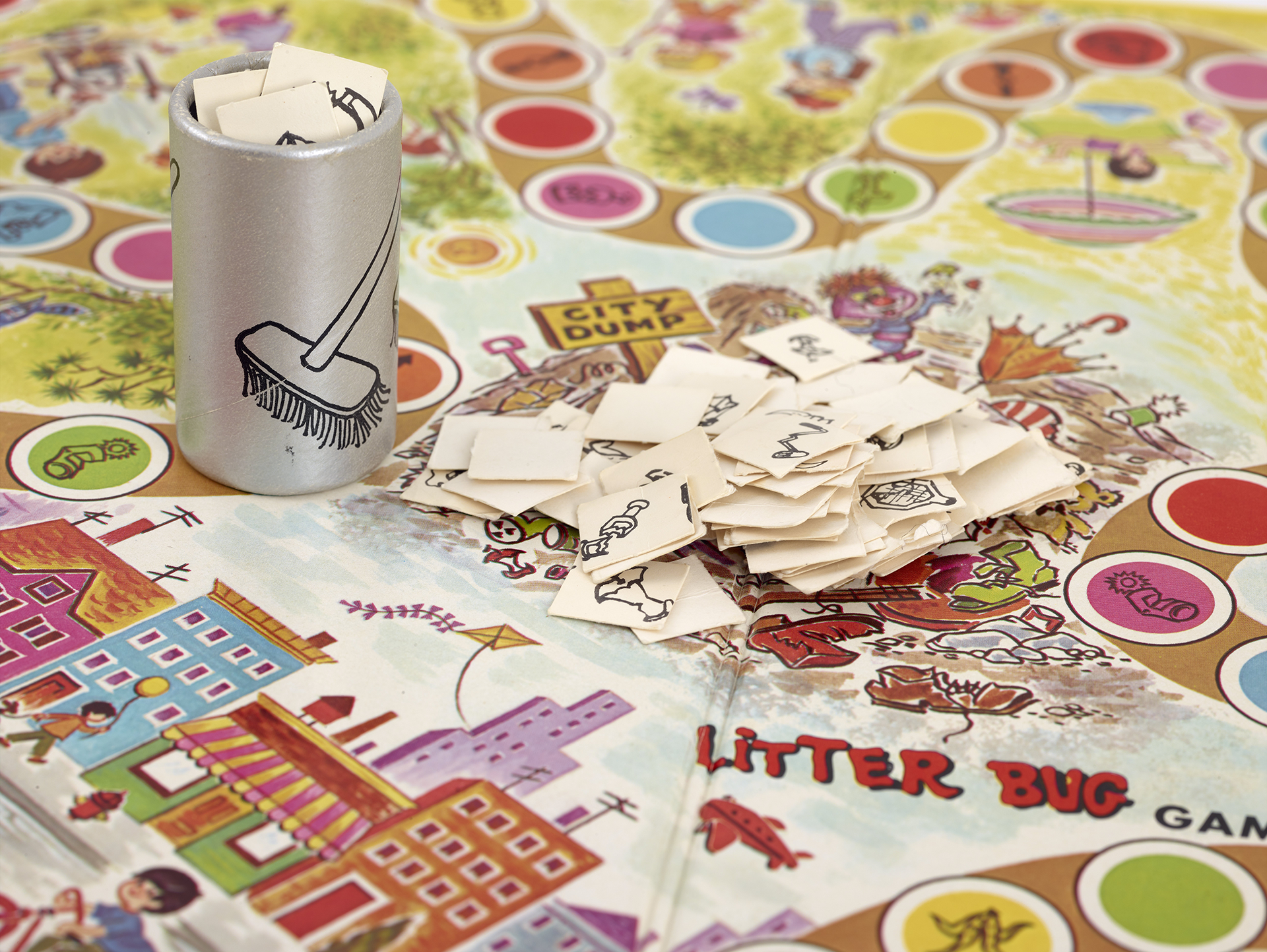
Another game included in “Playing Dirty,” Clean Water: The Water Pollution Game (1972), targets a more sophisticated audience than its whimsical visuals — sewage outflows, paper plants and copepods looking straight out of the Beatles’ 1968 “Yellow Submarine” film — or its tagline — “teaches people of all ages about ecology and water pollution” — might suggest. Each player is the “water pollution control official” for a different lake; the lakes, connected by rivers, are surrounded by farms, residential developments and an assortment of industrial pollution sources. Players roll a die to move around the board, trying to populate their lakes with the right organisms in the right ratios to comprise a healthy and stable ecosystem. Opportunities arise to bid for federal funding, buy pollution abatements, exchange an excess of one sort of organism for much-needed individuals of another. The first player with a fully stocked lake wins.
Created (along with such other games — not included in “Playing Dirty” — as Ecology: The Game of Man and Nature and Smog: The Air Pollution Game) by a group of Harvard-affiliated academics, Clean Water is better suited to impressing upon urban planning graduate students the complexities of ecosystem maintenance in the face of pollutant influx than whiling away a rainy afternoon with your pals. For her part, Sheu derived a lesson from Clean Water that she wouldn’t necessarily have foreseen pre-play. “It’s meant to teach you that not everything is within your control,” she observed. One player might fork over the money to abate, say, steel industry acid pollution for one particular lake, but other players’ lakes can still suffer the consequences. “You can be an awesome manager,” Sheu said, “but you’re also downstream of somebody.”
Sheu hopes viewers of “Playing Dirty” will come away from the exhibition not only appreciating board games as historical objects that reflect a moment in time but also pondering similarities between the 1970s and the present.
How do we teach people about the complexities of climate change? I think this is similar to the ecological crisis in the 1970s where people really felt that they needed to do something.”
— Sherri Sheu, Science History Institute curator
“A lot of people feel the urgency of climate change,” she says. “Again we find ourselves in this position where, man, we’re facing this problem. How are we going to combat it? How do we teach people about the complexities of climate change? I think this is similar to the ecological crisis in the 1970s where people really felt that they needed to do something.”
Sheu credits concern about climate change with driving a current board game boom, which she sees as a continuation of the rich tradition showcased in “Playing Dirty.” After pandemic-induced isolation, she says, folks are hungry for the connection possible over in-person game play. “It’s really hard when you’re separated by thousands of miles to have people know how angry you are by flipping the board over,” Sheu joked at her curator’s talk before attendees circled up to try such (non-vintage) games as Cascadia and Photosynthesis.
Many modern board games are more focused on cooperation than Litter Bug or Clean Water were, Sheu says. Perhaps, then, they can lead players to a realization the makers of Gomston: A Polluted City (1973), a classroom simulation featured in “Playing Dirty,” hoped to encourage. As players representing municipal interest groups try to address the problems plaguing Gomston, they have to figure out that everybody, in the end, is in the same boat. “Everybody needs to work together on this,” Sheu says. “You will either all swim together or you will all drown together.”
The Science History Institute is located at 315 Chestnut Street. The “Playing Dirty” website is sciencehistory.org/playing-dirty


